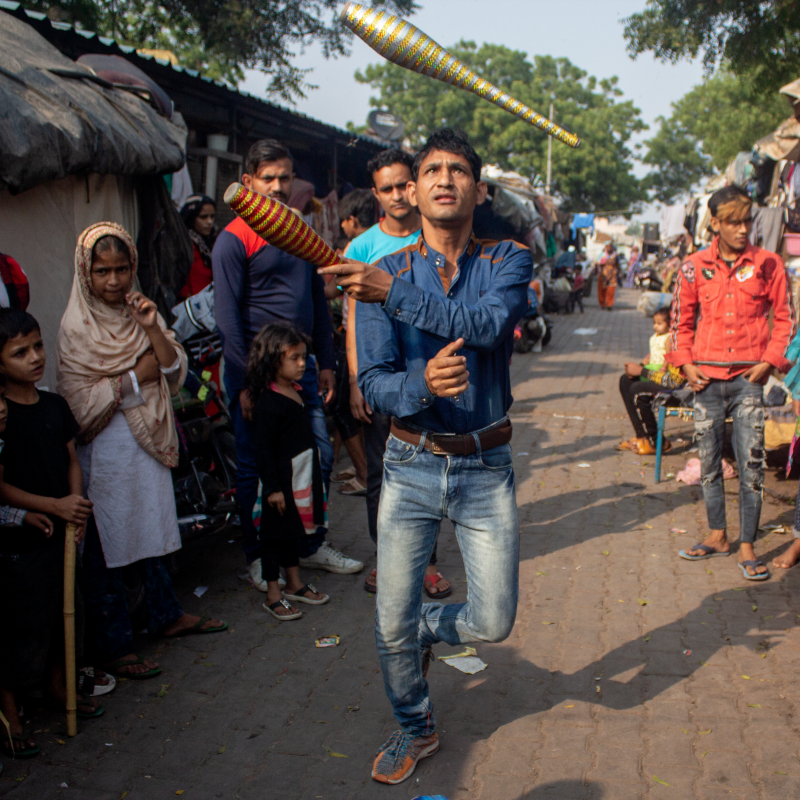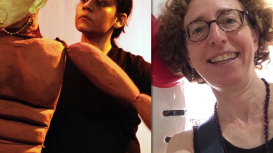In India, there are as many kinds of street art forms as there are regions and dialects, and where there is a likeness in form, there is variety in narrative and performative styles. Kathputli Colony in the Shadipur area of Delhi, one of the largest communities of street artists in the world, is an example of this diversity. It includes tribes of acrobats, magicians, puppeteers and masqueraders to small families of woodcarvers, knife makers and snake charmers.
However, in 2014, the 13-acre colony was reduced to a transit camp in Anand Parbat, an industrial area in West Delhi, as part of a redevelopment plan. What was supposed to be a three-year makeshift arrangement has entered its sixth year in 2020. While many of the artists continue to live and perform at the transit camp, some have moved out in search of work opportunities and are now scattered across the National Capital Region (NCR). Consequently, the colony is now fragmented in geography as well as spirit.
In their new spatial and sociopolitical habitat, the Kathputli Colony artists are adjusting to several changes: their performance stage, the street, that does not exist like it used to anymore with more vehicles than people on the road; open spaces once available to them are now gated societies; and their audiences, functioning by the industrial time, are no more open to being surprised by impromptu tricks in the middle of their routine.
So, where do the Kathputli Colony artists now stand in this new and ‘developing’ India? What do we know and not know about their performances and the processes that go into making them?



